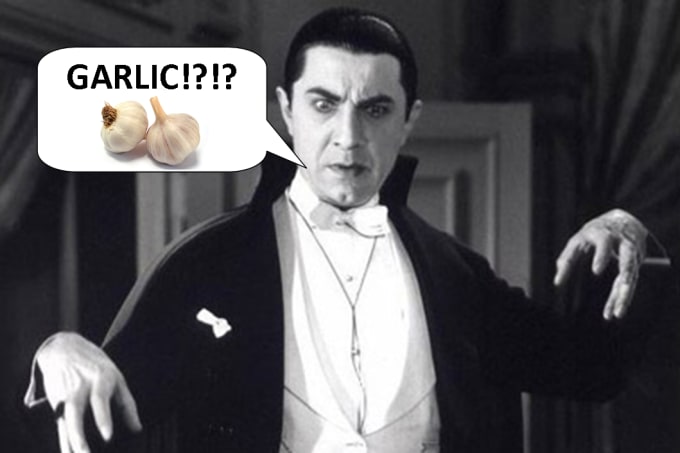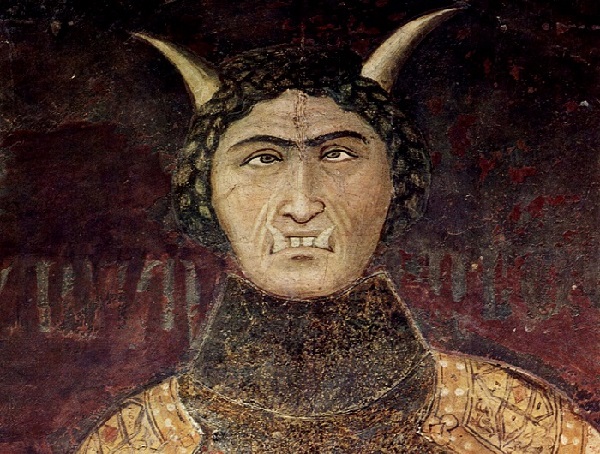What is a Vampire?
Throughout the history of legend and storytelling tradition, there have appeared a particularly dangerous set of creatures that feed on the vital life force of human beings. In modern day, they are known as vampires. Though there are many different legends of vampires that modern day perception can be traced back to, it appears that the first vampires were actually a form of revenants.

A revenant was known to be a vile undead creature that was driven to return to the earth because of the evil deeds it had committed in its previous life, or because of unfinished business. It was thought that early vampires were a form of revenant that targeted their victims by attacking them and feasting on their blood.
The original vampire was thought to be bloated in form and to have dark features – similar to what would be expected from a corpse in the early stages of decay. It was also believed that they often slept underground in coffins during the day, only to awaken at night and wreak havoc on their city. There were, however, ways to track down these vile creatures. One of the easiest was to search the cemetery for signs of holes above grave sites. These holes were thought to indicate the resting place of a vampire.
Vampires in Other Cultures
Though the majority of what we know of vampires comes from European folklore, there are references to similar creatures all over the world. Two of the most notable versions can be found in Hebrew and Greek mythology.
Hebrew mythology gives us the story of Lilith and the estries. Lilith is a female demon that is known to prey on the blood of babies, young children, and pregnant women. She was greatly feared and was known to have tremendous blood lust.
The estries were also known to be female demons who would suck the blood of humans to sustain themselves. It seems that one of the few differences between Lilith and the estries (besides the fact that Lilith was a single entity) is that the estries were not as picky when choosing their target. They were, however, known to prey on men that were vulnerable to sexual temptation.
Greek mythology references the story of Ambrogio – a mortal man who had the grave misfortune of desiring the same woman as the sun god, Apollo. He suffered greatly for his determination to marry the love of his life – and was transformed into what many consider to be a vampire during the process.
The Transition in Vampire Folklore
As time went on, there were many different variations of the vampire tale. These would serve to shape the myth to what we know in modern day. However, it wasn’t until the early 1800’s that the vampire legends could be clearly separated from the revenant legends.
In 1819, a man named John Polidori published a novella entitled, ‘The Vampyre.’ This work would go on to redefine how we view the vampire legend today. Instead of a horrid and bloated creature, Polidori transformed the vampire into a suave and charming beast of the night. This new perspective on vampires captivated audiences and only served to make the creature more terrifying. The thought of a seemingly everyday man or woman who could seduce a person into becoming their prey quickly caught on in many colonized countries.
Although ‘The Vampyre’ was the first work that set the bar for the modern day vampire, it would not be remembered by history. Instead, many will look to Bram Stoker’s ‘Dracula’ for the favored example. While ‘Dracula’ was quickly popularized and would go on to become the most famous vampire in history, it was not released until 1897. This indicates that many of Stoker’s ideas came from ‘The Vampyre.’
The Modern Day Vampire
The vampire of modern folklore is much more charming and charismatic than the tales of the bloated creatures in early mythology. Most vampires are defined as slender and beautiful people who are abnormally pale in complexion. They are known to have an almost allergic reaction to sunlight which often proves to be fatal. Similar weaknesses can be found with items made of silver and garlic.

It is known that vampires prefer to hunt at night because of their sensitivity to the sun. Although vampires can inhabit traditional spaces, it is still common practice for them to sleep inside coffins – perhaps because of the added protection against sunlight. Vampires are also known to have super-human strength and speed. They are also immortal, making them one of the most feared predators known to man.
What Causes a Person to Turn Into a Vampire?
Because of the fearsome nature of Vampires, careful guards were put into place to avoid the dreaded ‘turn’ of the dead. There were several things that were thought to cause a person to turn into a vampire – though the most common warning was usually the death of an evil person.
Evil People and Vampirism
It seems that the early cultures feared that people who died after leading evil lives and people who had refused to accept religion would come back as an evil entity. Many of these terrible human beings were thought to return as a vampire. Many cultures document cases of people who supposedly turned into a vampire after rebelling against the church. This was especially thought to be the case in Russia, where rebelling against the Russian Orthodox Church was thought to be a sure sign that a person would become an undead monster.
Other indications that a person could be a vampire in the afterlife was if that person was suspected of witchcraft. It was thought that those who practiced occult magic were directly tied to evil nature, making them some of the most feared individuals of their time.
The Danger of an Unguarded Corpse
It was also feared that corpses that had been left unguarded were vulnerable. This was based on two commonly held beliefs.
The first belief was that after the spirit of a person had left the body, a new host had the opportunity to use the body to interact with the living world. It was greatly feared that bodies which were not properly guarded before burial – or bodies that hadn’t been given proper funeral rites – would become possessed by an evil spirit. It was thought that these evil spirits would then come back as a vampire and attack the living.
The second belief was that a wild animal could somehow curse a body that was not guarded by jumping over it. When an animal (especially a dog or a cat) jumped over the body of a recently passed corpse, it was thought that the corpse would immediately turn into a vampire the following night.
Unclean Corpses
There also seems to be some sort of connection between uncleanliness and vampirism. During the Black Plague, many uneducated people believed that the plague was spread by vampires that came back at night and infected the remaining healthy population. This was likely because victims of the plague were often left with blood stains around their mouths – something that could easily be misinterpreted by the uninformed.
It was also believed that a body that had a wound that hadn’t been treated by boiling water was vulnerable to becoming a vampire. This knowledge was sometimes used as preventative knowledge, as it was common for boiling water to be poured over a grave as part of the funeral rites.
How to Defend Against Vampires
It goes without saying that a creature as fearsome as a vampire inspired many developments in early cultures – especially those that would serve as protection. There were several categories of protective knowledge and items that were used to guard against the much feared vampire.
Apotropaic Items
Apotropaic items were known to have special properties that made them effective in guarding against evil entities like vampires (and other revenants). There were several types of items that were used, but most apotropaic were known to have religious context. It was thought that since a vampire was a creature of pure evil, it would not be able to stand the presence of any type of holiness. Common religious apotropaic were the crucifix, rosaries, the image of Christ, and holy water. It was also thought that garlic, a branch of wild rose, hawthorn, and mustard seeds could be used to ward of the creature.
Helpful Knowledge
It makes sense that the more you know about the capabilities of a creature, the better you will be able to protect yourself against said creature. This was the position that was taken by many people who feared a vampire may lurk in their community.
It was known that vampires could not stand in the presence of that which was holy. This caused many to turn to consecrated ground (churches, temples, cemeteries) for refuge. It was also known that vampires were only active at night, which led many to implement curfews for the protection of their citizens.
It was also claimed that vampires could not cross running water. This was likely used by citizens who were fearful that they may be followed by an evil entity. Additionally, it was known that vampires could not enter a house unless they were invited inside. Once they had been invited, however, they could come and go as they pleased.
Preventative Measures
It was commonly thought that vampires did not have reflections or shadows. This was often used to determine the vampire status of an individual. Many who feared a vampire attack would place mirrors that faced outwards at their doors. If a stranger knocked and asked to be invited in, the house owner would check for their reflection and shadow before letting them in.
It was also believed that vampires had a strange fixation with numbers. Because of this, people would often leave bags of seeds, kernels, or grains of rice near their doorways. It was thought that once a vampire saw these things, he or she would be forced to count them until they knew the exact number. This was thought to be a great form of protection for citizens – leaving a bag of seeds for the vampire to count would ensure that they would be trapped there until the sun rose. Because the vampire could not stand the sun, it would then be killed.
Staking
One of the most common practices associated with fighting vampires – staking them with sharpened wood – was also used as a protective measure. Whenever a vampire was suspected in the community, graves would be searched, and guilty people would be questioned. Suspected vampires (dead or alive) would then be staked with the wood that was thought to be most effective.
Russia and the Baltic states were known to prefer to use Ash, while Serbia used Hawthorne. It is also recorded that Silesia thought Oak was the most effective wood. As Christianity began to rise in Europe, it became common to use Aspen wood. It was thought that Aspen was especially holy because this was the tree that was used to make the cross that Jesus was crucified on.
It was also common practice for suspected vampires to be staked through the heart. However, variants can be found in Russia and Serbia. Russia staked victims through the mouth, while Serbia staked victims through the stomach.
Burial Practices
Because of the fear of vampires coming back from the dead, many adopted burial practices that were thought to keep corpses in their graves. One of the popular methods was to decapitate the body of the recently parted. Many cultures believed that the soul sometimes lingered in the body after death, but that decapitating the head could force the soul to move on and keep it from causing problems.
It was also common for corpses to be put into positions that would make escape from the grave more difficult. Many corpses were buried upside down, while others were pinned to the ground by driving stakes through their heads, bodies, or clothes. Some cultures even went as far as to sever the tendons at the knees of the corpse so that it could not walk in death.
Ambrogio – The Legend of the First Vampire
Though certainly not as popular as Dracula, Greek mythology tells of Ambrogio – possibly the first vampire to reflect modern day myths.

The story goes that Ambrogio was visiting the Temple of Apollo (the sun god) when he met the Oracle of the temple – Selena. As soon as he saw her, he fell in love and became determined to spend the rest of his life with her. He plans to ask her for her hand in marriage. What Ambrogio didn’t know, however, was that Apollo also desired Selena for his own.
Apollo thinks about how he can prevent Ambrogio from marrying Selena (who has now proposed and is planning his wedding). In his jealousy, he curses Ambrogio to be burned by the sunlight whenever the rays touched his skin.
Ambrogio is angered and devastated – this new condition will keep him from being united with his love. He seeks the help of Hades (god of the underworld) and Artemis (goddess of the hunt). Hades offers help to Ambrogio – but requires him to steal Artemis’ silver bow to carry out a mission in return. Artemis is angered by the theft and curses Ambrogio to be burned by silver whenever he is touched by it as revenge.
As time goes on, Artemis takes pity on Ambrogio and offers him assistance. She gives him superhuman strength, immortality, and fangs that he can use to kill beasts. The legend also suggests that this blood would be used to write love poems to Selena. Eventually, Selena escapes Apollo and is reunited with Ambrogio. Now, however, she is cursed by the fact that she is mortal and Ambrogio is not.
Artemis comes to the couple’s rescue again by telling Ambrogio to drink Selena’s blood. Though her body would technically be killed, her spirit would become immortal and she would be able to live the rest of her life with Ambrogio. It is said that the combined blood of Selena and Ambrogio can be used to turn any human into a vampire.
Vampires Throughout History
There are also many tales of powerful vampires who caused terror in the hearts of the living that can be traced back to real people. These real life monsters are likely part of why the myth of the vampire is so popular in modern day.
Vlad the Impaler
Vlad was a powerful man who lived in Walachia, but in modern day he is known for his fierce brutality. He was known to enjoy impaling his enemies on stakes and letting them die slowly. There are also rumors that he enjoyed eating bread that had been dipped in the blood of his victims. Some versions of this rumor claim that he ate bread dipped in blood of enemies that were still in the process of dying and ate it while watching them take their last breaths.
Countess Elizabeth Bathory

While many would assume that a Countess would be mild mannered and well-cultured, Countess Elizabeth Bathory proved to be the exception. She was born in Hungary in the year 1560 and died in 1614. During her living years, she was known to have the blood of many victims on her hands – literally. She was known to have her enemies brought to her so that she could bite their flesh, perhaps as a form of torture. Later, she would bathe in their blood – supposedly as a beauty treatment.
Origins of the Myth
Like many other mythical creatures, it is hypothesized that people with undiagnosable medical conditions were likely the inspiration of the vampire myth. There is also the possibility that the myth of the vampire was inspired by cruel people – especially leaders that could not easily be defended against.
Cruel Leaders
In addition to being despised for their absolute power, leaders of early cultures were known to be especially cruel and vengeful with their subjects. It is possible that stories of cruel leaders were used to shape the legends for the infamous vampire. One of the most popular suggestions for the inspiration of the vampire myth is Vlad the Impaler.
Porphyria
Another possible source for inspiration is the condition known as ‘porphyria.’ This condition is known to cause sensitivity to light and is often characterized by those with reddish brown teeth. This would have been considered suspicious behavior in early cultures since most business had to be conducted during the day. Additionally, the reddish-brown stains on the teeth of the afflicted could have been easily mistaken for the blood of a human victim instead of a medical condition.
Other Medical Conditions
There are also other medical conditions that could have easily been confused for vampirism. One of these is Hemeralopia – a term for patients that suffer from day blindness. This condition would cause an individual to only be able to move about at night – a time of day that was associated with evil in early cultures.
Another condition is Haematodipsia – a term for those who suffer from a sexual thirst for blood. These patients connect the thirst for blood with sexual activities – something that would have caused much suspicion and fear in earlier times.
Natural Decomposition
There is also the possibility that the myth of the vampire was caused by the lack of knowledge concerning bodily decomposition. It was commonly thought that vampires slept in coffins during the day. This is likely because when bodies were dug up to check for signs of vampirism, it was common to see the corpse move or sit up whenever the coffin lid was opened. This would have likely been interpreted as reanimation by early cultures. In modern day, however, we know this happens because of a natural decaying process.
Vampires in Modern Day
Though we no longer have to be fearful of attacks from vampires in modern day, there are still groups of people who believe that they are vampires. Many of these strange communities can be found online and exist in the shadows of society. They are known to drink small amounts of blood (supposedly to stay healthy) from willing donors in private feeding rituals. Though these people appear to think that the drinking of human blood is done for reasons purely related to health, they often keep their practices private to deter the potential for vampire related panic.










